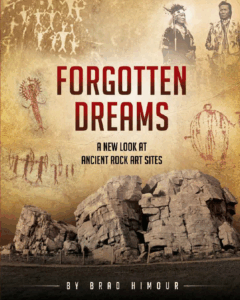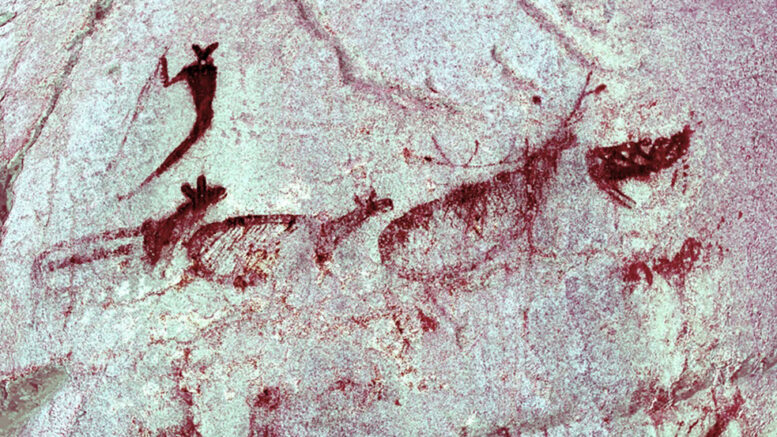By Laura Mushumanski, Local Journalism Initiative Reporter
(ANNews) – Red ochre is a natural clay carrying a red pigment that was historically used to create rock paintings, also known as pictographs. In Indigenous cultures rocks are known as one of our eldest living relatives. Rocks share stories but they do not always hold a spiritual meaning. They represent an Indigenous territory – a living landscape. In some cases, earth pigments were not used at all, instead rock carvings known as petroglyphs were used to share stories that can be found in the recent ‘rock art’ publication Forgotten Dreams.
 From the moment that the author of Forgotten Dreams, Brad Himour, found archeology, he knew “it was a perfect fit” for him. Since 1994 he has been an Indigenous liaison in archaeological studies. In 2013, he was awarded the Queen Elizabeth II Jubilee Medal for Indigenous engagement in Western Canada. For the past 15 years, while working on Forgotten Dreams, Himour built relationships with Elders and Knowledge Keepers on how he could combine Western Science with Indigenous Knowledge to share stories in an educational and respectful way.
From the moment that the author of Forgotten Dreams, Brad Himour, found archeology, he knew “it was a perfect fit” for him. Since 1994 he has been an Indigenous liaison in archaeological studies. In 2013, he was awarded the Queen Elizabeth II Jubilee Medal for Indigenous engagement in Western Canada. For the past 15 years, while working on Forgotten Dreams, Himour built relationships with Elders and Knowledge Keepers on how he could combine Western Science with Indigenous Knowledge to share stories in an educational and respectful way.
“The power of the book [Forgotten Dreams] is in the images and Elder quotes that are placed throughout the book,” shared Himour, while discussing that the stories of the living landscapes speak for themselves. The knowledge that each wisdom carrier shared about their own ancestral knowledge is one of the fundamental parts of the book. “If you want to understand the meaning of these living landscapes, you need to ask the ones that are keepers of that knowledge in a good way,” said Brad. He says that he is just a conduit, a helper bringing stories together.
Many of the living landscapes that are shown within Forgotten Dreams are in remote areas, including the ‘Shield Barring Warrior’ at Cochrane Ranch Historic Site, and the ‘Okotoks erratic’ located in Okotoks Provincial Historic Site. ‘Grotto Canyon’ near Canmore, Alberta has pictographs of flute players, a hunter wearing a ‘Two Horned’ headdress, and a row of Elk below it while sharing story of their landscape. The ceremonial site located along the Sinclair Creek in Kootenay National Park shares knowledge on the Ktunaxa and Secwepemc (Shuswap) peoples who have a strong tie between pictographs and spiritual activities. These 17 different sites that are shared within Forgotten Dreams take the reader on an adventure to learn about the importance of the transfer of knowledge within Indigenous Knowledge Systems.
For Himour to capture the red and orange pigments of the pictographs displayed throughout Forgotten Dreams, the photos were digitally enhanced by using a NASA engineered software called ‘Dstretch.’ This technology enabled the living landscapes to be seen digitally, so the stories being shared from Elders and Knowledge Keepers could come alive, depicting the cultural and spiritual significance and symbolism of different historic sites throughout Western Canada.
The last and 18th chapter of the book consists of stories from Blackfoot and Shuswap groups sharing the differences in the methodologies used and protocols of how pictographs were made. “And within these cultural landscapes,” shared by author Brad Himour, “these beautiful locations are places where the spirits live, and we are all part of that connection.”
To learn more about Brad Himour’s rock art book, please visit: forgottendreamspictographs.com



This article beautifully highlights the rich cultural heritage embedded in Indigenous rock art. The blend of Western science and Indigenous knowledge in *Forgotten Dreams* offers a profound and respectful perspective on these ancient sites.